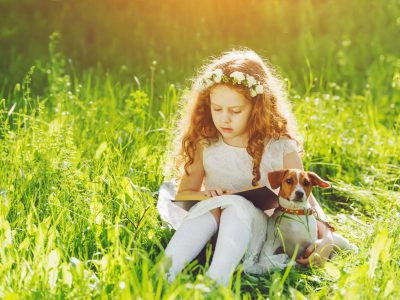Great Egret
Ardea alba
The male egret performs an elaborate courtship display to attract a mate
Advertisement
Great Egret Facts
- Prey
- Fish, mice, frogs, snakes, crayfish, and insects
- Fun Fact
- The male egret performs an elaborate courtship display to attract a mate
- Estimated Population Size
- 590,000-2.2 million mature individuals
- Biggest Threat
- Habitat loss
- Most Distinctive Feature
- The long, slender legs
- Other Name(s)
- Great white egret, common egret, and great white heron
- Wingspan
- 1.5m (5ft)
- Incubation Period
- 23-24 days
- Habitat
- Lakes, swamps, and wooded wetlands
- Predators
- Crows, jays, vultures, and raccoons
- Diet
- Carnivore
- Type
- Bird
- Common Name
- Great Egret
- Number Of Species
- 1
- Location
- Europe, Asia, Africa, and the Americas
- Nesting Location
- Next to the shore
- Age of Molting
- 6-7 weeks
- Migratory
- 1
View all of the Great Egret images!
Great Egret Summary
“The great egret has long legs that look a bit like stilts.“
Great egrets spend all their lives near wetlands and swamps. The legs help them wade easily through the shallow water in search of food. While they live in colonies, great egrets sometimes compete with each other for mates. This article will cover some interesting facts about the physical characteristics, behavior, and migration patterns of the great egret.
3 Great Egret Amazing Facts
- The great egret will retract its long, curved neck when in flight. The retractable neck is a common characteristic of herons but not storks and cranes.
- When the breeding season arrives, soft, delicate ornamental feathers sprout from the back. The long, sinewy feathers help to attract a mate.
- The great egret is a symbol of the National Audubon Society.
Where to Find the Great Egret
The great egret can be found all over the world near warm or tropical lakes, swamps, marshes, ponds, or wetlands, preferably with extensive reed beds and trees. Among the four subspecies, one is found primarily in Europe, another is located in the Americas, a third in Africa, and the eastern great egret is found in Asia and Oceania. The eastern great egret is almost distinct enough to be classified as its own separate species, but for now, it remains a subspecies of the great egret.
Great Egret Nests
The great egret nest is composed of sticks, twigs, and stems located in a colony close to the water. The nest can measure up to 3 feet long.
Great Egret Scientific Name
The scientific name of the great egret is Ardea alba. Ardea means heron in Latin, whereas alba means white. It is closely related to the gray heron, great blue heron, Pacific heron, and other species within the same genus. There isn’t much of an evolutionary difference between the egret and the heron. For instance, several herons are classified in the genus Egretta, and several egrets are classified in the genus Ardea. The main difference between these two genera comes down to size. Members of Ardea tend to be larger than members of Egretta.
Great Egret Size, Appearance, and Behavior
The great egret is characterized by extremely long, slender black legs, a big white body, a long yellow dagger-like bill, and a long neck that forms an S shape when retracted back toward the body. They measure more than 3 feet in height with an average wingspan of 5 feet. Males tend to be slightly larger than females, but otherwise, they are difficult to tell apart from each other.
Great egrets mostly live and breed in communal roosting sites near the shore. They spend most of their day feeding in shallow water and then gather in the nest around dusk. Great egrets are fairly aggressive about defending their territories, especially in the breeding season. They may leap at or jab an intruder while squawking loudly to chase it away.
Great Egret Migration and Timing
In warm climates, the great egret is mostly sedentary for the entire year, but northern populations do undertake a long migration south for the winter in response to changing temperatures. American birds may travel all the way down to the southern United States or Central America, where populations from central and eastern Asia may travel to South Asia and the Pacific island part of its range.
Great Egret Diet
The great egret is a carnivorous bird. They stand near the shore in shallow water and pick up food in the long beak. The competition with other wading birds is often quite fierce, but because of their enormous height and imposing size, great egrets have an advantage; they will sometimes steal food directly from the mouths of smaller birds.
What does the great egret eat?
The great egret has a very diverse diet that consists largely of fish, mice, frogs, snakes, crayfish, and insects. Their bill strikes are extremely fast and accurate.
Great Egret Predators, Threats, and Conservation Status
According to the IUCN Red List, the great egret is considered to be a species of least concern. At one point in the 19th century, large numbers of egrets were killed to make clothing from their plumage. While they are currently protected from hunting by the US Migratory Bird Act, great egrets still suffer from the loss of wetland habitats. Water pollution also poisons birds and thins out their shells.
What eats the great egret?
The adult egrets have very few if any predators in the wild, but eggs and juveniles are particularly vulnerable to jays, crows, vultures, and raccoons.
Great Egret Reproduction, Young, and Molting
The breeding season begins once a year in the middle of April when the male selects a territory and attempts to attract a suitable mate with his ritualized display, which includes mating calls, circular flight displays, and pointing his bill skyward with wings outstretched. Once a mate is selected, the pair will remain monogamous for the remainder of the breeding season. Together they will produce an average of three to four eggs in the nest, although sometimes up to six. If one egg is damaged, then the female can replace it quickly with another.
The chicks will hatch from the eggs after an incubation period lasting 23 to 24 days. They are covered in white down feathers and completely dependent on both parents for food and protection. Parents regurgitate the food directly into the mouth of the juvenile to feed them. It takes about two or three weeks for the juveniles to start growing their flight feathers and around six or seven weeks to leave the nest. The average age for sexual maturity is about two years of age. If the juvenile reaches adulthood, then the typical lifespan is 15 years in the wild and almost 23 years in captivity.
Great Egret Population
The great egret has an estimated population of 590,000 to 2.2 million mature individuals in the wild. Populations declined precipitously by the turn of the 20th century, but thanks to a ban on hunting, their numbers have greatly increased since then. Their range has now spread as far as the United Kingdom, where the first breeding pair was established in 2012.
View all 170 animals that start with GGreat Egret FAQs (Frequently Asked Questions)
Does the great egret migrate?
Northern populations migrate south for the winter.
How many eggs does the great egret lay?
The female lays an average clutch of three to four eggs per breeding season but sometimes up to six.
How fast does the great egret fly?
The great egret can achieve a top speed of approximately 32 miles per hour.
What is the great egret’s wingspan?
It has an average wingspan of about 5 feet long.
When do great egrets leave the nest?
They usually leave the nest a month or two after hatching.
What is a great egret?
The great egret is a large wading bird found all over the world. It is distinguished from other herons by its enormous height and all-white plumage, among other features.
The long, slender legs
The great egret consumes a wide array of different food, including fish, snakes, and frogs.
Are great egrets rare?
The great egret is fairly common throughout much of its natural range, but population numbers do depend on the frequency of wetlands in the area.
What is the difference between an egret and a great egret?
The great egret is defined largely by its enormous size and unique body shape. This distinguishes them from the smaller little egret and intermediate egret, both of which have a wingspan less than 4 feet long. The snowy egret, despite sporting an all-white plumage, can also be distinguished by the smaller body size, black beak, and crest feathers on its head.
What does it mean to see a great egret?
One of the most interesting facts is that in some cultures, the egret symbolizes peace, balance, harmony, and purity.
Are great egrets aggressive?
Great egrets can be very aggressive when it comes to the defense of their territory. Nesting and feeding appear to trigger their most aggressive behavior.
Thank you for reading! Have some feedback for us? Contact the AZ Animals editorial team.
Sources
- , Available here: https://animaldiversity.org/accounts/Ardea_alba/
- , Available here: https://www.audubon.org/field-guide/bird/great-egret


















